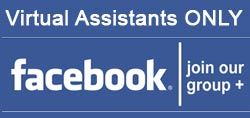
But animal kingdoms aside, did you know that the colours you use in your branding actually SAY something about you? So often I speak to business owners who say they chose those specific colours because ‘they liked them’, or ‘they were pretty’, or because that is what their designer chose. But the real trick in choosing colours for business is too use the hues and shades that appeal to your target audience, not to you. Think about it – who are you trying to appeal to? Obviously you already like your business – you are running it?
We spend so much time and money on marketing, social media, and promotion, but why not use the science of colour to attract clients as well? Of course, colors can mean different things depending on the culture, situation and industry. However, in my experience, I believe these have some universal meanings – and so does John Williams, president and founder of LogoYes.com.
He categorizes colour this way:
Blue: Cool blue is perceived as trustworthy, dependable, fiscally responsible and secure. Strongly associated with the sky and sea, blue is serene and universally well-liked. Blue is an especially popular color with financial institutions, as its message of stability inspires trust.
Red: Red activates your pituitary gland, increasing your heart rate and causing you to breathe more rapidly. This visceral response makes red aggressive, energetic, provocative and attention-grabbing. Count on red to evoke a passionate response, albeit not always a favorable one. For example, red can represent danger or indebtedness.
Green: In general, green connotes health, freshness and serenity. However, green’s meaning varies with its many shades. Deeper greens are associated with wealth or prestige, while light greens are calming.
Yellow: In every society, yellow is associated with the sun. Thus, it communicates optimism, positivism, light and warmth. Certain shades seem to motivate and stimulate creative thought and energy. The eye sees bright yellows before any other color, making them great for point-of-purchase displays.
Purple: Purple is a color favored by creative types. With its blend of passionate red and tranquil blue, it evokes mystery, sophistication, spirituality and royalty. Lavender evokes nostalgia and sentimentality.
Pink: Pink’s message varies by intensity. Hot pinks convey energy, youthfulness, fun and excitement and are recommended for less expensive or trendy products for women or girls. Dusty pinks appear sentimental. Lighter pinks are more romantic.
Orange: Cheerful orange evokes exuberance, fun and vitality. With the drama of red plus the cheer of yellow, orange is viewed as gregarious and often childlike. Research indicates its lighter shades appeal to an upscale market. Peach tones work well with health care, restaurants and beauty salons.
Brown: This earthy color conveys simplicity, durability and stability. It can also elicit a negative response from consumers who relate to it as dirty. Certain shades of brown, like terracotta, can convey an upscale look. From a functional perspective, brown tends to hide dirt, making it a logical choice for some trucking and industrial companies.
Black: Black is serious, bold, powerful and classic. It creates drama and connotes sophistication. Black works well for expensive products, but can also make a product look heavy.
White: White connotes simplicity, cleanliness and purity. The human eye views white as a brilliant color, so it immediately catches the eye in signage. White is often used with infant and health-related products.
Putting it into Practice
So the “science” is there – but how do I use it? Let me use my own branding strategy as an example. The Pibworth brand colours are two shades of brown, and a steel blue. Why did I choose these colours?
Blue is predominantly a corporate colour. It inspires trust and is universally well liked. The shade of blue I chose had a hint of grey, which I felt softened it – making it appealing to males and females alike. Blue is dependable and secure – and evokes a feeling of trust. An emotion that is essential in my business. I do what I say I am going to do.
Brown is an earthy colour, showing stability and adding an element of humanness to the steel blue. Brown is warm and welcoming – and is currently “the new black”. Brown is a heritage colour, which tends to appeal to older, more established clients.
The bottom line – I wanted to attract, established speakers and trainers who presented topics of substance that I could easily market. I wanted to work with A-type personalities who knew what they wanted and were able to articulate their needs. I wanted people with a ‘corporate edge” – and that is who I am attracting. I’m not saying it is 100% because of my branding choices, of course my marketing, speaking and various other activities factor in there – but the branding I have incorporated plays a part and reflects the consistency of my message. That is what I wish for all of you!








